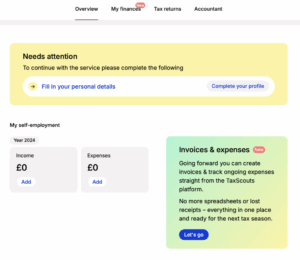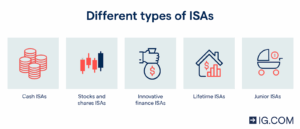When it comes to this Labour government and pensions their big focus is on their Pension Review.
Like when any new government comes to power, they always promise a review when they don’t necessarily know the full details of or have yet to come up with, ideas that are developed enough to present to the public.
They want to criticise the last government and convince us things were bad before and by promising a review, they are essentially saying they think they can come up with something better.
A review also justifies work for the Civil Service.
Labour’s main aim with the Pension Review is to consolidate pensions.
It wants fewer and larger defined contribution workplace schemes and it separately wants to merge all of the Local Government Pension Schemes.
.Phase one of the review has recently been released and it already points to a worrying strategy going forward and a lack of understanding of how the pension market really works.
Let me explain the truth and what you need to do to protect your pension funds.
The Idea
Phase one of the Pension Review: Pensions Investment Review – Interim Report gives us a good idea of the direction of travel for pensions under this Labour government.
In the latest release the government say they would like to consolidate Local Government Pension Schemes.
Currently, even though the Local Government Pension Scheme is essentially the same no matter which Local Authority you work for, there are 86 different administering authorities. Meaning different councils have their own pension.
Interestingly, unlike other public sector defined benefit pensions like the NHS pension or the Teachers Pension, the Local Government Pension Scheme is fully funded.
Rather than the other public sector Ponzi schemes it has used employers’ contributions, saved and invested assets so there is a pot there to pay all retirees their pensions.
The government’s belief is that by merging all of these pension schemes into one, it can unlock the £392billion of assets these schemes hold and invest them better with more emphasis on investment into UK infrastructure projects and UK start-ups.
It’s a bit misleading to quote the £392billion and make it sound like a large chunk of this can help go into growing the UK economy.
Firstly, due to the nature of defined benefit pension schemes a large chunk of the scheme assets will be held in fixed interest investments like government gilts and corporate bonds.
This gives the schemes a more secure and known source of return to help pay retirees pension payments.

Source: Pension Fund Investment and the UK Economy
Currently at least 20% of the total Local Government Pension Scheme assets are invested in fixed interest assets.
Secondly, the Local Government Pension Scheme is a big buyer of UK government debt (gilts) and the government will need them to continue to be and possibly buy even more of it if this government continues to borrow more.
Thirdly, if we look at the listed equity (shares in global public companies) element of the Local Government Pension Scheme assets then the schemes already invest 17% of the listed equity proportion in UK equities which is well overweight compared to where all global capital is allocated which is more like 3% to the UK.
Whilst their stated motives are not ideal, as the overall Local Government Pension Scheme is essentially the same whichever local authority you work for, it probably does make sense to consolidate here.
More so to ensure efficiency and cost savings in the administration. The scheme should be highly digitised and with only a small team needed to manage it.
In the US state of Nevada their state pension scheme is managed by just one person, Steve Edmundson who overseas £60billion of assets.
The other big theme to come out of the latest interim report is that the government wants fewer and larger defined contribution workplace pension schemes.
They want to introduce a minimum size for ‘default’ pension funds (the funds your pension gets invested into if you don’t pick your own) and limit the number of default funds altogether.
If you work in the private sector, a defined contribution pension is the most likely pension you will have via your employer. It’s the type of pension where you and your employer pay into, there is a pot of money building up and you invest it.
Again, by consolidating schemes and making them larger into pension megafunds, the government believe there can be cost savings and more importantly that they can get more investment of these pension funds into UK assets which they think will drive UK growth.
They often quote the Australian pension model whereby they say that because Australia has these pension megafunds, more of Australian pension assets are invested in Australia and retirees get a better return.
It’s worth stating that the previous Conservative government were already going down similar lines when you read former Chancellor Jeremy Hunt’s last Mansion House speech.
The Conservatives also appear to support the pension ‘megafunds’ idea with Shadow Levelling Up Secretary Kevin Hollinrake saying as much in a recent Sky News interview.
The problem with pension megafunds and why the Australian model is a myth
On the back of the interim report release, the now former Pensions Minister Emma Reynolds was on GB News promoting the government’s ideas around megafunds and praising the Australian model.
At one point in the interview Reynolds light heartedly said she would not be managing people’s pension money but by creating these pension megafunds the government WILL have more control over your money.
The whole point of creating the megafunds is for the government to get more investment into UK assets like infrastructure and UK start-ups.
Although the government will appoint pension providers and investment managers to run these megafunds, they are only going to get the job if they comply with the government’s request.
It was noted in the reports that the pension industry is generally in favour of this approach.
Of course they will be. The pension market is dominated by a few big providers and of course they will have no problem having more of a share of the market if they can eat up the smaller providers.
Less pension schemes means less competition so the ones that will do well out of this new system will be the big investment managers who will get the mandate to manage the pension investments.
Worryingly, the government are even considering allowing your pension to be transferred from a smaller scheme to a larger scheme without your consent.
Who are the government to say which pension is better for you and what you should do with your money?!
You often here the government praising the Australian pension model and this is where they want the UK to get to. So, is the Australian model as good as they say?
Well, let’s actually do some analysis.
The Australian pension megafunds are actually called superannuation.
I’ve had a look at two of the biggest providers and their investment options.
In my experience as a Financial Adviser and working with hundreds of people saving into their pension, the majority of people when looking at their pension investments will opt for a balanced approach to risk.
They want a mix of growth assets like stock market equities and more defensive assets like fixed interest bonds.
This generally ends up being a 60/40 portfolio. 60% equities and 40% bonds.
Therefore, I have compared the performance of the 60/40 equivalent ready-made portfolios with the two different superannuation schemes with the UK pension sector average 60/40 portfolio.


Data up to 16/01/2025.
So, whilst it’s true that Australian pension schemes do invest more in Australian equities compared to the UK, it’s not strictly true that this helps them perform better.
Performance is actually very similar to the UK equivalent pension investment options.
Remember also that 40% of these portfolios are allocated to fixed interest investments and a large proportion of this will be in government bonds.
Therefore, the government already has a large amount of control over people’s retirement pots by managing government debt. Something no government has been able to do competently in recent years with the size of government debt now breaching 100% of UK GDP.
What about the government’s claim that by investing more in home assets it will help drive UK growth more generally?
Has this worked in Australia given they invest more in ‘home’ assets?

 Source: Trading Economics
Source: Trading Economics
Again, there is not much difference in GDP growth between us and Australia over the last 25 years apart form the fact they have coped much better than us during 2008 financial crisis and the Covid crisis.
Even if the government gets its way and forces more of our pension money into UK assets there is a reason why this currently doesn’t happen.
It’s because the UK has not been a great place to invest. Returns have been far better overseas. All the world’s greatest companies tend to list in the US or places where business is treated much better in areas with low taxation.
Whilst it’s patriotic to want to invest in the UK, surely you want the best returns possible for your pension? Until the government gets its act together and makes this a place businesses want to be, returns from the UK will not match overseas.
The real scandal
The real scandal that has not been discussed in the Pension Review so far is ‘default lifestyle funds’.
Or we could call them, wealth destruction machines!
These are funds that were built on the back of regulation to get people’s workplace pensions invested.
Auto enrolment has been very successful in making sure everyone who works now has a pension and that they pay in to along with their employer. But many people do still not take any interest in where their pension is actually invested.
Without a nudge, many people’s pension would just be left in cash not earning anything.
So, some bright spark came up with the idea of lifestyle funds.
If you don’t choose your own investments for your workplace pension you might be automatically invested into one of these funds.
These funds are designed to automatically change the exposure to certain assets as you get older.
For example, if you are young, maybe in your 20s, you will most likely be mainly invested in global equities. But as you get closer to your nominated retirement age you will be slowly moved out of equities into fixed interest assets.
The idea is that fixed interest should be less risky (or less volatile to be more accurate) so when you approach retirement your funds should be more protected from large falls in values.
However, the problem is that not only do you not know when you will retire, even when you do retire you still could have 20-30+ years in retirement.
Your pension pot needs to last a long time and also needs to keep up with the impact of inflation during this time. So, investing in something that has little growth just doesn’t make sense.
Is it even safer to be in fixed interest assets at the point you retire?
Well, ask these retirees how they felt when they saw a huge drop in their pension value following spikes in gilt yields after the mini-Budget of September 2022 or even more recently following Labour’s October 2024 Budget.
We don’t need pension megafunds or more government control over which pension we should have and where we should invest.
We need more education on how investing works and more access to different assets like gold, residential property, collectibles and possibly even cryptocurrency.
For example, annualised returns from a simple global equity tracker fund like the Vanguard FTSE Global All Cap fund have been 10.51% over the last five years.
This is a high bar that the government need to reach if they plan to do their own investment management with more UK assets.
Why can’t the government treat us like adults and allow us to be responsible for our own lives.
A new Pensions Minister
We touched on this earlier. At the time of writing this article, the main person leading the Pension Review, Emma Reynolds, has left her role as Pensions Minister to take up the position of Economic Secretary to the Treasury.
This means we now have a new Pensions Minister Torsten Bell mid review.
Mr Bell has previously been the Chief Executive of the Resolution Foundation which is an economic think tank.
He has previously put his name to a number of worrying tax ideas as documented in a Resolution Foundation report: ‘Ending Stagnation – A New Economic Strategy For Britain’.
This report sets out ideas such as:
- Removing Inheritance Tax allowances and making everyone pay it.
- Raising the Capital Gains Tax rate to 37% on equities and 53% on residential property.
- Charing Capital Gains Tax on death.
- Raising the basic Dividend Tax rate to 20%.
All rather worrying that this guy is now in charge of pensions and something to keep an even closer eye on.
How to protect your pension
If you are concerned about Labour’s pension plans, then here are few things you can do to keep control.
Firstly, you need to get familiar and understand your workplace pension scheme. Know what your investment options are and how to change them.
If you have lots of smaller pensions from previous employers, then it may be a good idea to transfer them into your current scheme but watch one of my previous videos on this first so you don’t end up giving up any valuable benefits.
In terms of what investment you should be picking this will of course depend on your attitude to risk and your timeframe for investment.
Even if you are closer to retirement this doesn’t mean you should be taking less risk in the traditional sense.
The risk pension providers are talking about is volatility. The amount your pension value moves up and down.
You only get better returns by accepting higher volatility.
As you get closer to retirement, remember you may still have a long time for your pension to be invested if you are planning to utilise flexible drawdown. It could be invested for the rest of your life.
You need an investment strategy that will at least grow your funds in line with inflation if not more.
Usually, the only way to achieve this is an allocation to global equities. All of the world’s most successful businesses.
Don’t get sucked into the marketing from big fund managers saying they can beat the market. The evidence shows no one can do this consistently so you are better off looking for low-cost tracker funds.
Once you do retire or leave a workplace you may want to consider setting up your own private pension like a Self Invested Personal Pension (SIPP). This keeps it away from the government’s grubby hands for now as there don’t appear to be plans to tamper with this market at the moment.
You could then transfer your old workplace pensions into this.
A SIPP will give you the most flexibility when it comes to pension withdrawals and also the biggest range of investments to choose from.
Depending on the size of your pension pot you might want to consider splitting it between two different providers just to diversify and spread your risk.
The results of the Pension Review look like they will take some time to implement so don’t expect to see these pension megafunds anytime soon.
What we do know is that this is the general direction of travel supported by both of the main political parties.
So, get as much control over your own pensions as you can now before the government come looking.
If you would like to stress test your legacy planning or even to get a plan in place then please get in touch for a free no obligation 15-minute call. We would be happy to review your position, explain where you stand and what you need to do to get the outcome you desire. We have created hundreds of happy and protected retirements over the years. This could be you too.



